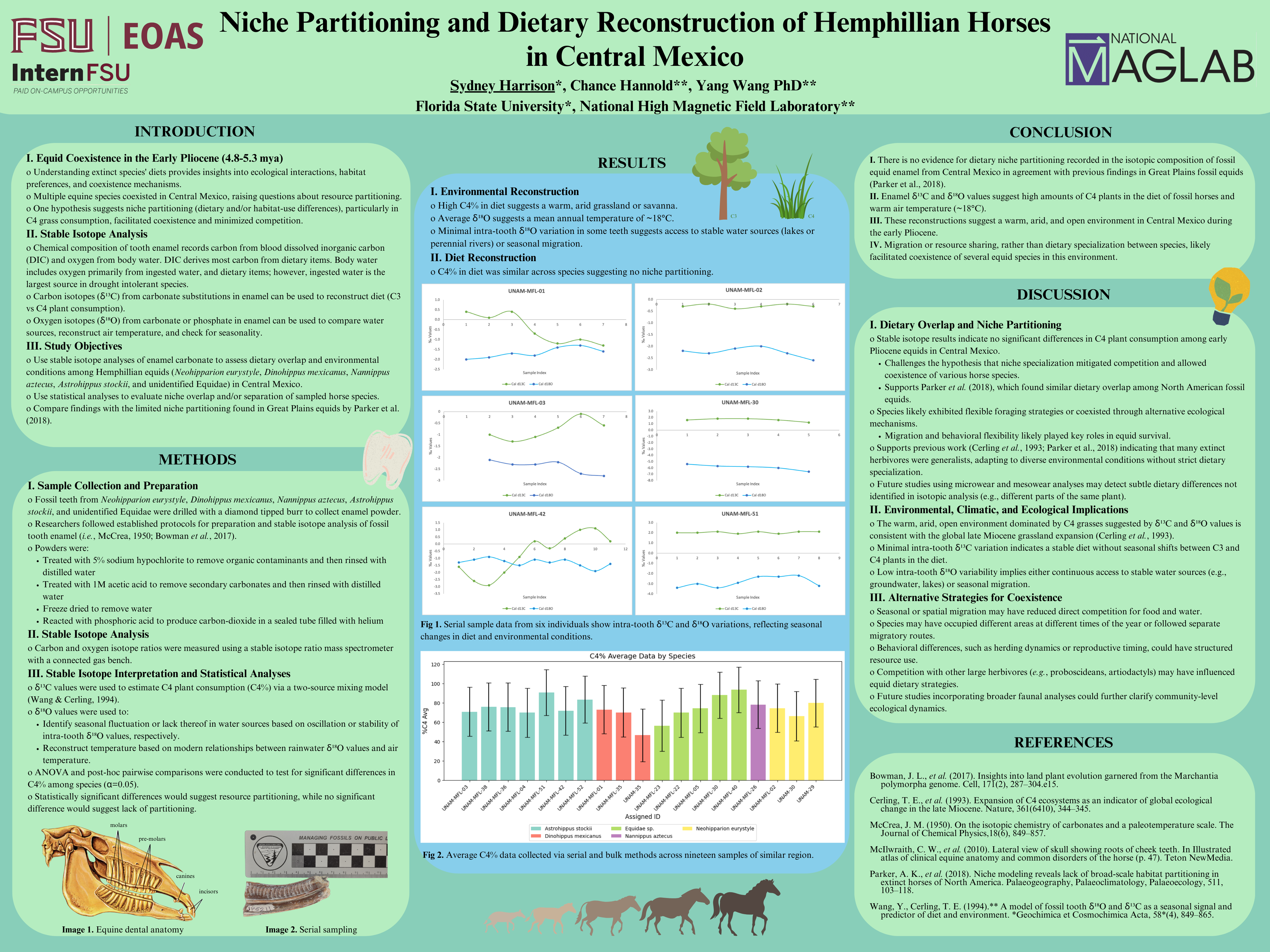Research Symposium
25th annual Undergraduate Research Symposium, April 1, 2025
Sydney Harrison Poster Session 2: 10:45 am - 11:45 am/ Poster #256

BIO
During my recent time at Florida State University, I have had multiple opportunities to assist research under the guidance of esteemed faculty. I was selected as a lab assistant through InternFSU at the National High Magnetic Field Laboratory and have participated in research under Professor Yang Wang since 2022. By engaging in the laboratory process, this experience has broadened my interest in developing my own research methods. While this work focused on a different research topic than what I am interested in for future work, the laboratory work made me appreciate the importance of detailed research methods and procedures. My education has been dedicated to pursuing this passion for the natural sciences and I am enthusiastic to apply it towards a career. I am currently enrolled at Florida State University pursuing a degree in Environmental Science with a minor in Biology (marine science focus). I hope to pursue a career which will allow me to expand my network of skillsets, as well as garner new research methods to aid in future conservation endeavors.
Niche Partitioning and Dietary Reconstruction of Hemphillian Horses in Central Mexico
Authors: Sydney Harrison, Dr. Yang WangStudent Major: Environmental Science
Mentor: Dr. Yang Wang
Mentor's Department: Department of Earth Ocean Atmospheric Science Mentor's College: College of Arts and Sciences Co-Presenters:
Abstract
This study examines dietary overlap among Hemphillian (early Pilocene) equine species in Central Mexico by reconstructing the percentage of C4 plant consumption (C4%) and seasonality using δ13C and δ18O values recorded in fossil teeth. We reconstruct the average and minimum C4% estimates across Neohipparion eurystyle, Dinohippus mexicanus, Nannippus aztecus, Astrohippus stockii, and Equidae (unknown sp.) to test the hypothesis of niche partitioning between sympatric equids. However, our results show no statistically significant differences in C4% between species (p-values > 0.05), suggesting a lack of dietary niche differentiation. These findings align with Parker et al. (2018), who found no large-scale habitat partitioning among extinct North American horses. Instead, our data suggest that all sampled equids consumed similar proportions of C4 plants, implying shared foraging strategies and habitat use. Temperature reconstructions indicate a warmer mean annual temperature of ~18 °C (16°C, 19°C; 95% CI). Enamel δ13C and δ18O isotopes indicate a warm, dry, and open habitat for all sampled equids. These results challenge the hypothesis that dietary differences led to the ecological separation between these species. The lack of intra-tooth variability in δ18O likely reflects either the use of an isotopically stable water source, such as a lake or groundwater source, or seasonal migration. Other factors—such as seasonal migration—must have mitigated competition to allow these species to coexist while sharing a dietary niche.
Keywords: isotope, horse, data, oxygen, carbon, niche


